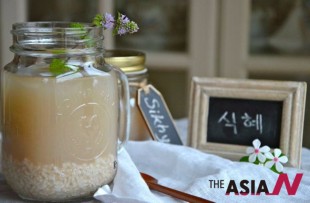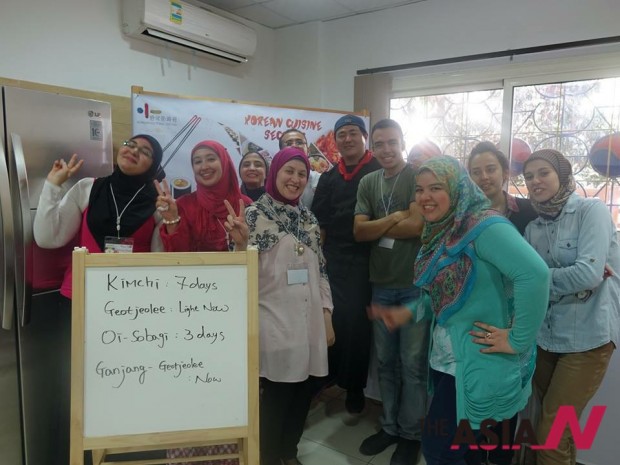
Korean Cultural Center in Cairo has organized a workshop about “Korean cooking secrets” in four lectures over the past two weeks under the supervision of Chef Joonghee Yang. Chef Yang is Korean and currently making a tour around the world to spread the Korean culture by revealing the secrets of Korean dishes at the same time learn the traditional cuisine from each country, and he have already been in Japan, Thailand, Vietnam and Egypt.
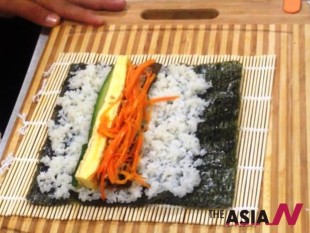
In the first lecture Chef Yang prepared the “kimbap”; a major and important dish among Koreans, it is because it contains a large amount of rice, and the word “kimbap” is divided into two “kim” means seaweed and “bap” means rice. Mothers prepare it in the early morning for their children to take it with them on their trips, so nowadays “kimbap” is associated with happy memories. Sofactory labors take it with them as a complete full meal.
In the late sixties and early seventies preparing “kimbap” was done only in homes but in the early nineties it started to be prepared in restaurants and people can eat it in restaurants or even order it to be delivered wherever. The “kimbap” in Koreahas become as popular as foul and falafel in Egypt. Japan and China where the first countries to follow Korea in this matter, then after the sushi went viral in the world through Japan the “kimbap” reached Australia, American and much more countries.
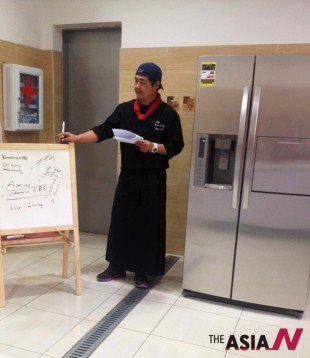
The Japanese and the Chinese are always keen to buy the Korean “Kim” because of its finest quality. So what differs the “kimbap” from the “sushi” is the way the rice is cooked and how it is stuffed. In the “kimbap” the rice is boiled then sesame oil and salt are sprinkled on it , and filling is a combination of vegetables such as carrots, cucumber, radish pickles, and other components such as egg slices, minced meat and soy sauce, sesame, sugar, salt and pepper, and also “tuna with mayonnaise” it is one of the most expensive types of “kimbap” in Korea.
So when you eat it you feel the taste of Korean cuisine in one dish, as it reflects the Korean culture, which is characterized by abundant colors and different tastes.Kim, rice and eggs are considered the main base of this dish.As for the “sushi” salt and vinegar and sugar are added to the rice when it is boiled and the filling is composed of only on component that is stuffed or on top of it.
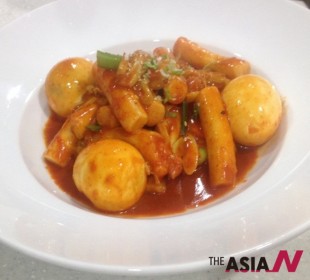
In the second lecture chef Young prepared two dishes are “Topkki” which means fried rice cake, and it is a long cut of rice cakes fried in red pepper sauce with Chinese cabbage, onions, carrots, white sugar, honey, sesame seeds and eggs, and it is one of the snacks that is loved by adults and children, and its taste is spicy and sweet at the same time, in the seventies the Koreans stated preparing it, The King was eating it with soy sauce, sesame and it’s called “gungjungtopkki”, but common people was eating it with red pepper sauce because it was cheaper. “Topkki” shops are more popular than “kimbap” shops in Korea.
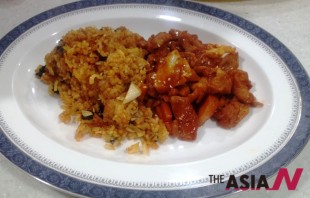
As for the “dakgalbi” which means the chicken Ribs, in the beginning it was made with pork’s meat and soaked in a special marinade and then cook and eat,but then it is replaced by chicken ribs because pork meat is expensive. That’s why we can see university students loving it because of its good taste and reasonable price for them. It has appeared for the first time in, ” Chinchon “city , South Korea , and it was brown in color because of its seasoned soy sauce and then became red color because it is seasoned chili sauce .
So when people go with their family or friends to the restaurant to eat “dakgalbi” they Gather around a large table with a stove in the middle, where they can put chicken, carrots, potatoes, cabbage, onions and Chinese (“tok” rice cake) and chili sauce, after it sits remaining broth, put the rice and mince with a little of the “kim” and sprinkle on the top of it as well.
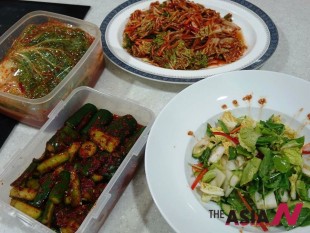
The third lecture was the preparation of “kimchi” which is a famous side dishes in Korea and it is eaten with rice. “kimchi” is divided into “kim” whichgoes back to the origin of the Chinese characters “dim” which means gold. “chi” means vegetables, which is a healthy dish with few calories and contains many Vitamins ( A, B, and C and Amino Acid ),
In the early winter Koreans prepare “kimchi” to compensate them for their loss of vitamins throughout the winter, and also “oi-sobagi” means ” cucumber Kimchi” to refresh them in the summer, and there are many kinds of “kimchi” according to the availability of vegetables throughout the seasons of the year.
The “kimchi” appeared of 1,500 years ago, and in the era of the Joseon began to eat sauce red pepper, and it depends on the vegetables, salt and chili and fermentation, so each type has a duration of fermentation in a different form from the other, and they put the “kimchi” in a pot of deep pottery called “jangdokdae ” for fermentation and storage for a long time.
There are many kinds of them “kimchi” and it is a mix of Chinese lettuce , radishes , carrots and watercress , red pepper, salt, sugar and sauce red chili pepper, brewed for a week , and “oi-sobagi” Pickle cucumber is a combination of cucumbers, salt , garlic, chili powder , sesame , green onions and it is fermented for 3 days , and “get-jorei” which is the fresh “kimchi” it is made up of vegetables, soy sauce and fish oil , sesame oil and eaten fresh without fermentation, “Ganjang-get-jorei” which is a new type of the “kimchi”, it is easy to prepare and it is composed of vegetables, sauce chili and it has to be eaten in the same day that’s why we find that the taste of “kimchi” crispy, fresh, cured, heady and spicy at the same time.
Finally in last lecture chef Young prepared Koreandesserts and refreshing beverages, and most of the desserts are composed of rice as they depend on the nature flavoring in desserts such as honey, as “gangjeong” which ismeans “sweet rice balls Inflatable” and It is a mixture of rice flour and white honey caught in different forms the it is dried in the air, after that it is fried in oil and dipped in honey and sprinkled with a layer of bean powder, sesame, mashed beans pine.also “dasik” which ismeans “tea sweets ” milled rice with nuts, stir with honey and it is made in different forms, so Koreans used to eat it with tea.
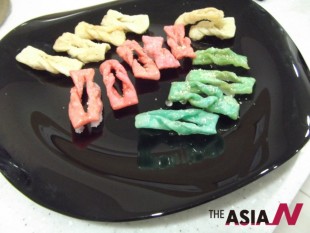
Also Chef Yang prepared another twodishs, the first one is “yak-bab” which is mean ” sweet rice cake “, it is a mixture of rice , nuts , brown sugar , sesame oil and soy sauce and cinnamon , and it is cooked and then line up and left to dry and then cut into small squares . The second dish is “Meajakgwa” which is mean “fried cakes strips “, it isa mixture of rice flour and ginger and kneaded with water and then form it into small strips and fry in oil and watered by syrup.
As for Korean drinks, we find the tea drinks such as “nokcha” which is mean “green tea ” its appeared for the first time in China, the Chinese was drying tea leaves then then roasting then drying and boiling and drink it hot or cold.Its spread in Japan and Korea, and the Chinese roasting tea significantly when it is transferred to the country as far away as India and the Middle East, Europe and here the Red tea appeared.Korea is characterized by “insam-cha” which is mean ” Ginseng Tea” that’s Europeans are keen to buy.
There are other drinks such as Korea is famous for its “shikey” which is mean ” rice syrup ,” it is a traditional drink served with desserts Koreans love it very much , which is a fermented barley rice grains, it is a good taste it is sweet and served cold.
Chef Yang prepared cool and refreshing drinks such as “sujeongewa” which is mean “cinnamonsyrup,” it is a cool drink of cinnamon and ginger boiled and sweeten withbrown sugar.Also made “omija-hawchae” which is mean “alchezandra berry syrup” it has a five different flavors by nature sour, salty and sweet. It’s boiled and then filtered and sweeten with sugar and served cold.

